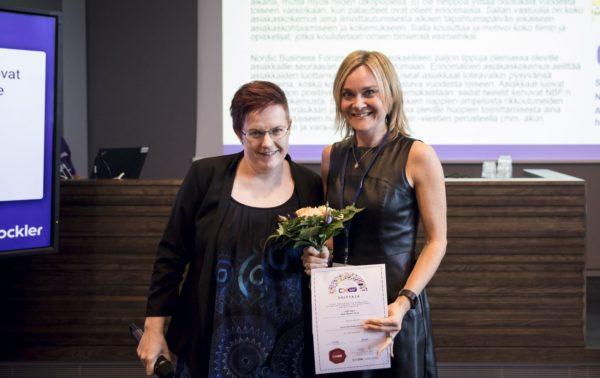28Sep2018
The following blog was written by CGI, a partner of Nordic Business Forum 2018. The writer Samu Paajanen is Director of Data Science at CGI and has been part of numerous AI projects.
Organizations have inflated the expectations to AI. AI can indeed boost business and help cutting costs, but successfully harnessing AI means change, and change is never easy. Despite the eagerness to start experimenting with AI, organizations tend to be poorly prepared to implementing AI.
Big innovations and large scale AI deployments require co-operation across corporate silos, changing the familiar practices and processes, learning new tasks and, what may be the hardest part of all, letting go of old routines. For these to be possible, more often than not the organizational culture must change. Needless to say, cultural change takes time and is often painful.
I daresay that the biggest challenges in successfully deploying AI are not at all in technology or mathematical skills. Instead, the real challenges originate from the corporate culture, siloed organization and old habits. I’m honored to share a few key learnings I’ve gathered during my career with the Nordic Business Forum blog readers.
“I daresay, that the real challenges of AI deployment originate from the corporate culture, siloed organization and old habits”
Lesson 1: Think like a customer
AI is not a single tool, which can be taken into use like a new CRM system. From a technical angle AI is a range of advanced analytics and automation technologies, which can be applied to so many purposes that it shall break industry boundaries and enable disruptive business models. A good starting point is to think what your customer really buys. They don’t buy insurances, they buy security. They don’t buy taxi trips, they buy quick, easy and reliable transportation. How could you make the transportation even better? And what additional services could you offer? Never lose the focus of your customer or you may end up solving the wrong problems. It is good to start from a small AI pilot, but the big picture must be kept in mind.
AI can be used to accurately select the fastest stallion in the whole country. This doesn’t bring value if your customer prefers automobiles to horses.
Lesson 2: Old habits die hard
Even the best companies, which have been in business very long, are at risk of occasionally losing the customer focus. It’s even easier to lose focus of which tasks and routines are really important. I have seen employees of big companies still printing documents and faxing them, because “it is the easiest way.” Of course it’s not. Don’t start building the AI solution to revive obsolete work processes, no matter how lucrative the business case may seem. Often the processes have been optimized for all-manual work. In 90% of these cases, it is way easier to modernize the process, instead of reviving the old process with AI.
Lesson 3: The question, not the answer
I have sometimes bragged that any recurring event can be predicted by our data scientists, if only we get them the right data sources. This is not too much of an exaggeration, but sometimes finding the answer is not the hard part. I can’t emphasize enough the importance of finding the right questions for the first AI pilots. If your findings after the AI pilot are seen as “interesting” and “good to know”, but don’t spark a vivid discussion (which definitely they should!), it’s possible that the questions were wrong from the start.
Lesson 4: Knowledge does not equal action
So you’ve checked from multiple sources that your AI pilot answers the right questions? For example, your solution can very accurately predict which patients are at risk of permanent disablement. If your findings, however, still don’t seem to interest anybody it’s a sure sign you haven’t engaged the right stakeholders and decision makers.
You also have to introduce a plan to describe how to deploy your solution to production, to make it support the daily work. If you fail to engage the right people or fail to plan the next steps after the first AI pilot, there’s a risk that your AI solution will be completed and soon forgotten. No matter how much knowledge it provides. Nothing comes out of knowledge without any action.
Lesson 5: Show them the money
Obviously, from the very first pilot, AI must provide some value. Calculate your business case. If your AI solution accurately predicts which customers will be churning, show how much money can be saved if, say, 10% of these customers can be convinced to stay. Track the results of targeting these customers and show how much is their total value to the company. Making the value explicit is crucial in the first AI pilots, in order to make everybody aware of the business value of AI.
Once you have 1) understood your customers’ needs, 2) ensured you’re building new instead of reviving obsolete routines, 3) found the right questions, 4) engaged the right stakeholders, and 5) calculated the business potential, you’re all set to let the data scientist work their magic!
Do you agree? Please share your thoughts in Twitter #nbforum2018 and feel free to contact me. You might also want to check out Finland’s first technology-themed talk show where I guest starred.

 by:
by: 
